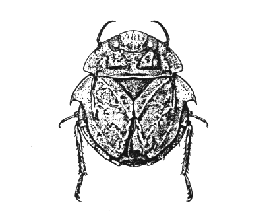Related Research Articles
The Thirty Tyrants were an oligarchy that briefly ruled Athens from 405 BC to 404 BC. Installed into power by the Spartans after the Athenian surrender in the Peloponnesian War, the Thirty became known for their tyrannical rule, first being called "The Thirty Tyrants" by Polycrates. Although they maintained power for only eight months, their reign resulted in the killing of 5% of the Athenian population, the confiscation of citizens' property, and the exile of other democratic supporters.
Gyrinus is a genus of small aquatic whirligig beetles in the family Gyrinidae native to the Palearctic, the Near East, the Nearctic, North Africa, Asia and Australia.
Eumathes is a genus of longhorn beetles of the subfamily Lamiinae.
Eumathes amazonicus is a species of beetle in the family Cerambycidae. It was described by Henry Walter Bates in 1866. It is known from Brazil.
Eumathes cuprascens is a species of beetle in the family Cerambycidae. It was described by Bates in 1874. It is known from Nicaragua and Panama.

Ambrysus is a genus of creeping water bugs in the family Naucoridae. There are more than 90 described species in Ambrysus.
Euspilotus is a genus of clown beetles in the family Histeridae. There are more than 80 described species in Euspilotus.
References
- ↑ BioLib.cz - Eumathes colombicus. Retrieved on 8 September 2014.